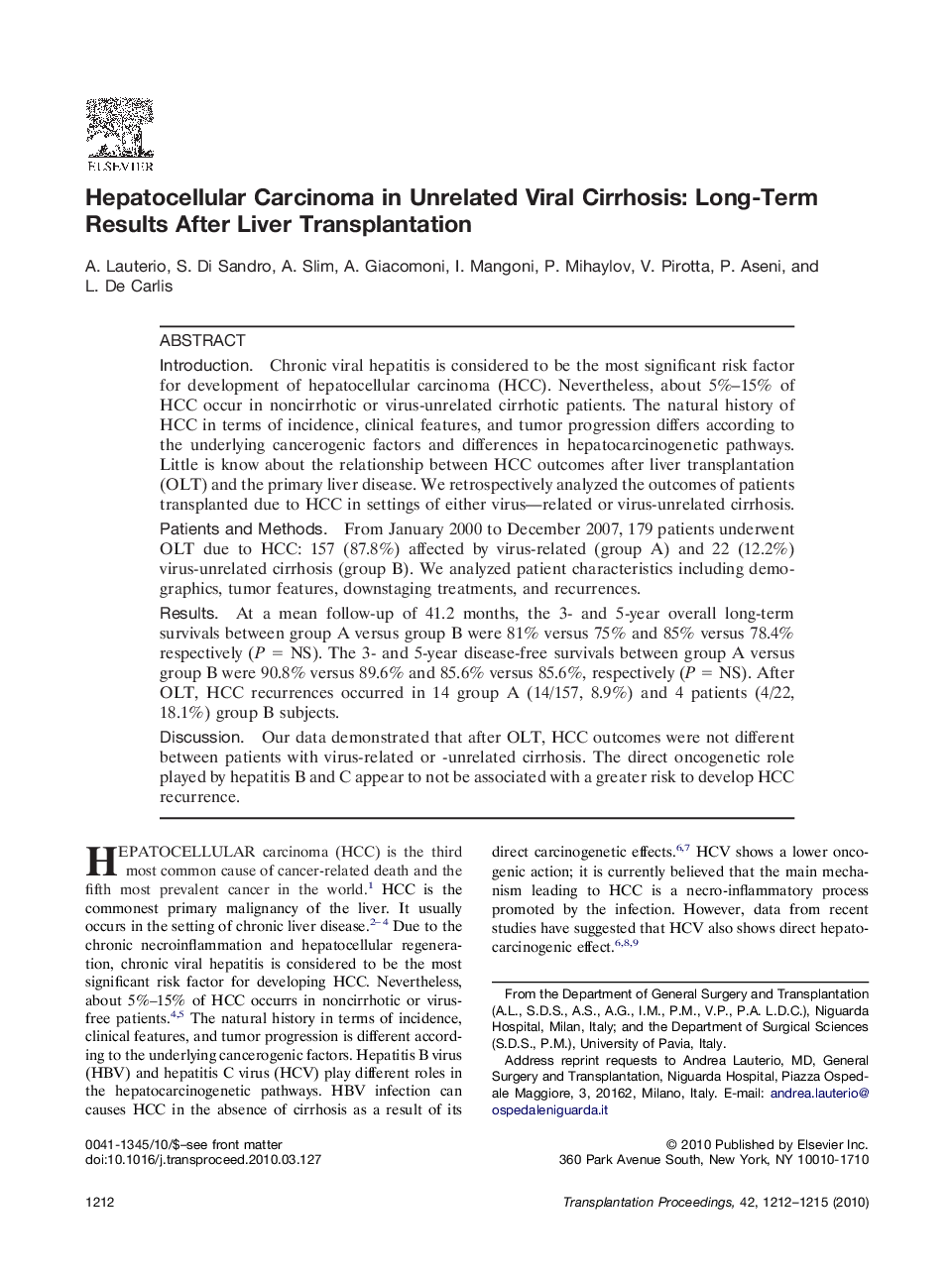| Article ID | Journal | Published Year | Pages | File Type |
|---|---|---|---|---|
| 4259630 | Transplantation Proceedings | 2010 | 4 Pages |
IntroductionChronic viral hepatitis is considered to be the most significant risk factor for development of hepatocellular carcinoma (HCC). Nevertheless, about 5%–15% of HCC occur in noncirrhotic or virus-unrelated cirrhotic patients. The natural history of HCC in terms of incidence, clinical features, and tumor progression differs according to the underlying cancerogenic factors and differences in hepatocarcinogenetic pathways. Little is know about the relationship between HCC outcomes after liver transplantation (OLT) and the primary liver disease. We retrospectively analyzed the outcomes of patients transplanted due to HCC in settings of either virus—related or virus-unrelated cirrhosis.Patients and MethodsFrom January 2000 to December 2007, 179 patients underwent OLT due to HCC: 157 (87.8%) affected by virus-related (group A) and 22 (12.2%) virus-unrelated cirrhosis (group B). We analyzed patient characteristics including demographics, tumor features, downstaging treatments, and recurrences.ResultsAt a mean follow-up of 41.2 months, the 3- and 5-year overall long-term survivals between group A versus group B were 81% versus 75% and 85% versus 78.4% respectively (P = NS). The 3- and 5-year disease-free survivals between group A versus group B were 90.8% versus 89.6% and 85.6% versus 85.6%, respectively (P = NS). After OLT, HCC recurrences occurred in 14 group A (14/157, 8.9%) and 4 patients (4/22, 18.1%) group B subjects.DiscussionOur data demonstrated that after OLT, HCC outcomes were not different between patients with virus-related or -unrelated cirrhosis. The direct oncogenetic role played by hepatitis B and C appear to not be associated with a greater risk to develop HCC recurrence.
